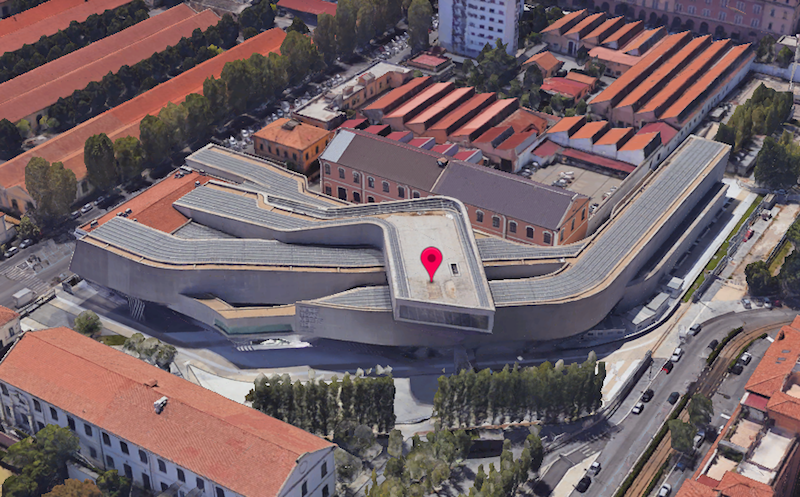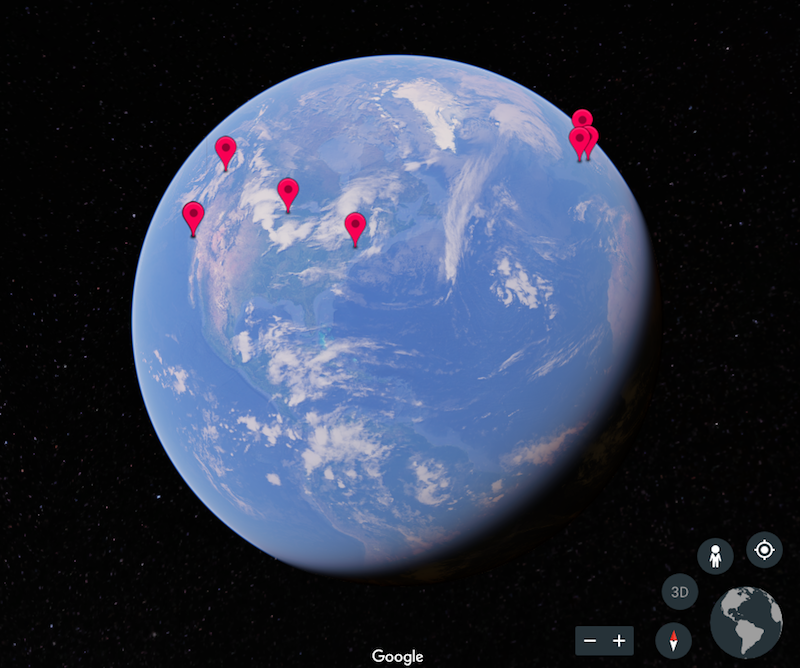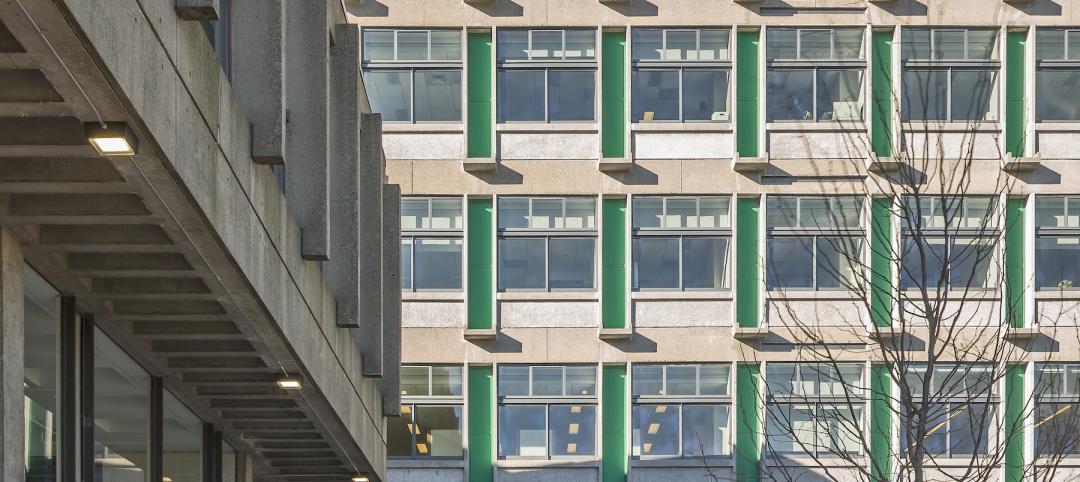Google Earth recently relaunched with a host of new features to help people explore the world in even more detail without ever having to leave the air-conditioned comforts of their homes.
One of the most fascinating new features is known as Voyager and it allows people to “experience interactive stories from around the world.” Anyone can now take guided, interactive tours of famous cities, cultural landmarks, and lost civilizations. These tours have been curated by entities such as BBC Earth, DigitalGlobe, and The Ocean Agency.
Two tours, specifically, will be of interest to anyone with a passion for architecture: Frank Gehry Buildings and Architecture by Zaha Hadid.
Frank Gehry Buildings showcases eight of the architect’s designs from around the world such as the Vitra Design Museum in Weil am Rhein, Germany, Dancing House in Prague Czech Republic, and Museum of Pop Culture in Seattle Wash. Each building comes with a short blurb explaining the building’s main function.
 Frank Gehry's Dancing House. Courtesy Google Earth.
Frank Gehry's Dancing House. Courtesy Google Earth.
Architecture by Zaha Hadid features six of the late architect’s buildings such as the London Aquatics Center, the Bergisel Ski Jump in Innsbruch Austria, and Havenhuis in Antwerp, Belgium.
As one moves from building to building, the map zooms out, moves over the globe to the next landmark’s location, and then zooms back in. Once at the site, one is free to move around and zoom in and out as one pleases, or allow Google Earth to automatically pan slowly around the building. Building’s can be viewed in either 2D or 3D. Each building can be explored in Street View, as well.
Voyager allows people to view these often times very familiar structures in a more macro context. Instead of the professional pictures everyone has come to associate with a building like Gehry’s Walt Disney Concert Hall or Hadid’s MAXXI, people can now gain a better understanding of how the buildings fit into their site and the overall city.
 Zaha Hadid's MAXXI museum. Courtesy Google Earth.
Zaha Hadid's MAXXI museum. Courtesy Google Earth.
Other current Voyager tours include Museums Around the World, Lost Civilizations from Above, Hemingway’s Hangouts, and Following Charles Dickens.
Related Stories
Sponsored | Steel Buildings | Jan 25, 2022
Structural Game Changer: Winning solution for curved-wall gymnasium design
Sponsored | Steel Buildings | Jan 25, 2022
Multifamily + Hospitality: Benefits of building in long-span composite floor systems
Long-span composite floor systems provide unique advantages in the construction of multi-family and hospitality facilities. This introductory course explains what composite deck is, how it works, what typical composite deck profiles look like and provides guidelines for using composite floor systems. This is a nano unit course.
Sponsored | Reconstruction & Renovation | Jan 25, 2022
Concrete buildings: Effective solutions for restorations and major repairs
Architectural concrete as we know it today was invented in the 19th century. It reached new heights in the U.S. after World War II when mid-century modernism was in vogue, following in the footsteps of a European aesthetic that expressed structure and permanent surfaces through this exposed material. Concrete was treated as a monolithic miracle, waterproof and structurally and visually versatile.
Urban Planning | Jan 25, 2022
Retooling innovation districts for medium-sized cities
This type of development isn’t just about innovation or lab space; and it’s not just universities or research institutions that are driving this change.
Sponsored | Resiliency | Jan 24, 2022
Norshield Products Fortify Critical NYC Infrastructure
New York City has two very large buildings dedicated to answering the 911 calls of its five boroughs. With more than 11 million emergency calls annually, it makes perfect sense. The second of these buildings, the Public Safety Answering Center II (PSAC II) is located on a nine-acre parcel of land in the Bronx. It’s an imposing 450,000 square-foot structure—a 240-foot-wide by 240-foot-tall cube. The gleaming aluminum cube risesthe equivalent of 24 stories from behind a grassy berm, projecting the unlikely impression that it might actually be floating. Like most visually striking structures, the building has drawn as much scorn as it has admiration.
Sponsored | Resiliency | Jan 24, 2022
Blast Hazard Mitigation: Building Openings for Greater Safety and Security
Coronavirus | Jan 20, 2022
Advances and challenges in improving indoor air quality in commercial buildings
Michael Dreidger, CEO of IAQ tech startup Airsset speaks with BD+C's John Caulfield about how building owners and property managers can improve their buildings' air quality.
Architects | Jan 17, 2022
OSPORTS adds Robert Hayes to lead operational and business development efforts
Hayes will guide the OSPORTS organization in its mission to offer a unique perspective to designing world-class facilities.
Architects | Jan 13, 2022
Hollywood is now the Stream Factory
Insatiable demand for original content, and its availability on a growing number of streaming platforms, have created shortages — and opportunities — for new sound stages.
Architects | Jan 13, 2022
Robert Eisenstat and Paul Mankins receive 2022 AIA Award for Excellence in Public Architecture
The award recognizes architects, public officials, or other individuals who design distinguished public facilities and advocate for design excellence.

















